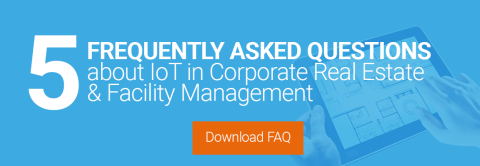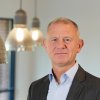
Real estate and facility managers are focusing less on the usual business drivers such as cost efficiency and understand more and more that their employees are actually their most valuable resource. Employees are a huge contributing factor within the organisation and are an important driver for innovation. The demand from workforces and new generations of employees for agile and attractive workplaces is increasing. Hence, organisations have to continuously adjust their workplace strategy in order to attract and retain employees that fit their organisation. A potential war for talent is lurking!
How to increase employee engagement
Employee engagement, empowerment and fulfillment are the three main drivers in the Human Experience Model from Jones Lang Lasalle (JLL). From these three drivers, employee engagement is perceived as the main influencing factor. How an employee experiences the work environment is influencing employee engagement and plays an important role in the employee’s selection of an employer or organisation. The introduction of new workplace concepts, new types of space and improving workplaces by, for example, optimising comfort, occupancy, quality of air, acoustics and light enables employees to feel engaged and connected to their work and the organisation. Engaged employees are more focused, energetic and committed to contributing to the objectives of their organisation.
The number of employees that feel engaged about their work and work environment on a global scale has decreased slightly from 65% to 63% according to Aon’s 2017 Trends in Global Employee Engagement report. And a recent global survey by JLL discovered that approximately 70% of the employees questioned said that happiness at work is the most important factor for a unique work experience. This provides challenges for real estate and facility managers who play a significant role in workplace design and optimization, and helping to deliver a high-quality workplace experience for employees. However, how can they increase employee engagement, empowerment and fulfilment? In addition, how can they attract and retain talent and what is role technology plays in all that?
The Internet of Things and the development of Smart and Learning Buildings might be a very welcome change that contributes to employee engagement. Measuring occupancy, quality of air, acoustics, light and even employee happiness through smart technology by using sensors can contribute to optimising the workplace, employee engagement and the organisational objectives. As mentioned in my previous blog, smart buildings are evolving to the next level and become learning buildings. ‘Machine learning’ enables buildings to learn and make predictions from collected measurements and data and in this way, they become ‘Learning’ buildings.
The ability to use smart solutions and rate buildings, workplaces and employees on categories such as mind, comfort, occupancy, fitness, light, nourishment, water, air and sound is increasing. This helps us to improve our buildings and workplaces. In addition, it makes us able to learn and predict from data analysis on employee behaviour, the performance and state of our workplaces and employee preferences regarding the workplace environment. It provides real estate and facility managers the tools to inform, advise and coach their employees through smart devices on the usage of specific workplaces - concerning light, sound, comfort, occupancy and quality of air. Employees will feel more engaged, happier, more productive and therefore contribute to organisational objectives.

Start developing use cases and business cases
The three finalists of the winning workplace award 2017 in the Netherlands – VGZ, Plantronics and Enexis – all set employee engagement as one of their priorities in their workplace strategy. They have all worked closely together with their employees in developing their workplace strategy. In addition, they use technology to measure factors such as space occupancy, employee happiness and fitness, and the quality of air, sound and light. On top of that, they use the data from these measurements to improve their workplaces. For example, at the new Plantronics office walls, floors and ceilings are made of noise absorbing materials, whereas speakers and microphones are integrated in walls and ceilings to mask surrounding noise based on noise masking technology. Combining this technology with data regarding space occupancy and workspace user preferences contributes to an agile, attractive and healthy workplace. Next to using technology based on IoT, these three leading organisations have one other important factor in common; they started their smart journey in using technology with developing use cases and business cases related to their business challenges to create an agile, attractive and healthy workplace.
Improving workplaces, employee engagement and wellness requires technology and metrics to provide information and feedback for facility managers, real estate managers and employees by which workplace strategy objectives can be achieved. Real estate and facility managers will need to provide technology-enabled workplace solutions that will allow greater agility and flexibility for both the organisation and the employee, as well as long-term workplace effectiveness. Real estate and facility managers will have to determine a) what they want to measure, b) how to measure this and c) what the real value of these measurements will be. Just as the three finalists of the winning workplace award and increasingly more organisations are doing, they will have to determine their use cases and establish their business case in using the Internet of Things to create attractive and healthy workplaces. In the end, they may be victorious in the War for Talent.





















